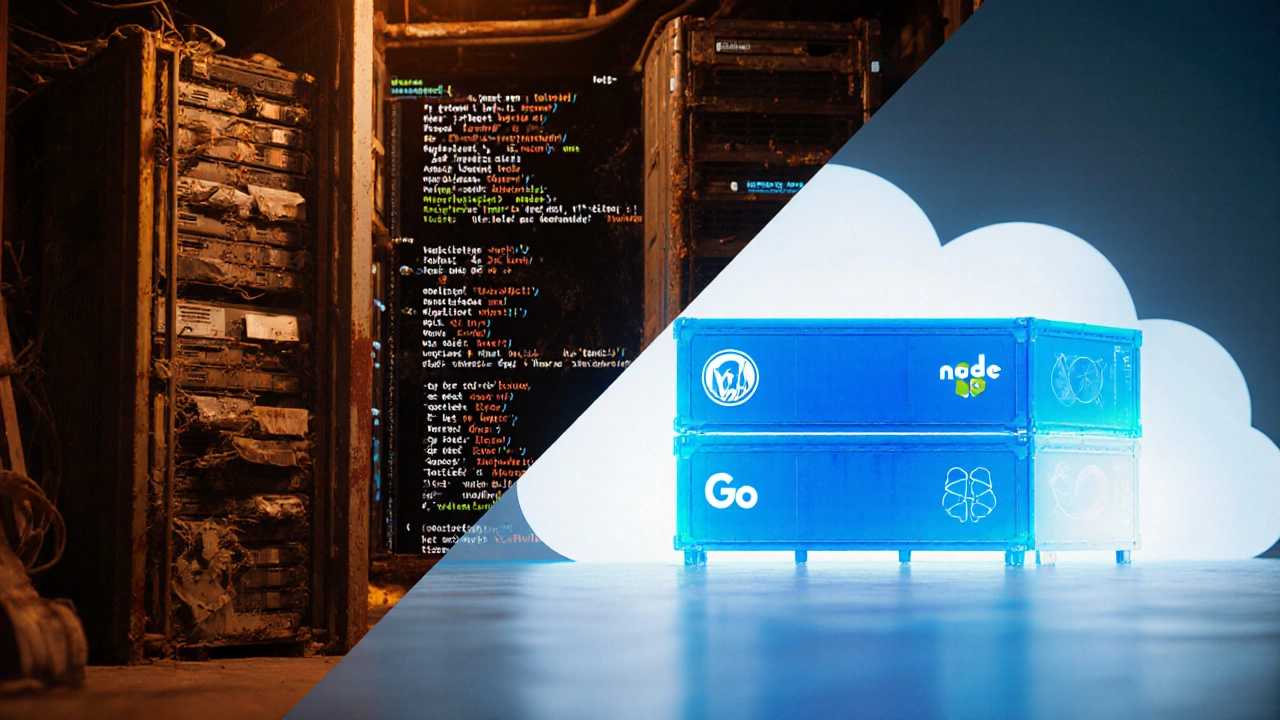PHP Migration Decision Checker
This tool helps you determine whether migrating from PHP is worth it based on key factors. Answer the following questions honestly to get personalized recommendations.
CMS Dependency
Is your application heavily dependent on a CMS like WordPress or Drupal that requires PHP?
Performance Needs
Do you require millisecond-level latency for high-frequency APIs?
Team Skills
Is your team comfortable with modern async patterns and type-safe languages?
Security Issues
Are security audits flagging legacy PHP functions or practices?
Hiring Trends
Do hiring pipelines favor JavaScript/TypeScript skills over PHP?
Your analysis results will appear here after answering the questions.
When talking about server‑side scripting, PHP is a language that powers a huge portion of the web, originally released in 1995. It powers WordPress, Drupal and countless legacy systems. Yet many teams now question its relevance. Below we unpack the most common PHP drawbacks and explore why newer stacks often win the developer vote.
Key Takeaways
- PHP’s performance gap has narrowed, but languages like Go and Node.js still deliver faster request handling.
- Inconsistent function naming and legacy quirks make code harder to maintain.
- Modern ecosystems (npm, pip, Cargo) provide richer tooling and package safety.
- Hiring trends show a growing preference for JavaScript‑centric full‑stack skills.
- Switching away from PHP makes sense when you need real‑time features, microservices, or tighter security guarantees.
Performance: Speed Matters
Early versions of PHP were interpreted line‑by‑line, leading to noticeable latency under load
Today’s PHP 8.3 adds JIT compilation and improved type handling, shrinking the gap, but it still lags behind Go which compiles to native code and handles concurrency with goroutines. A 2024 benchmark from the Tech Performance Lab showed a simple JSON API returning 150k requests per second in Go, versus 85k in PHP under similar hardware.
For sites that need real‑time chat, live dashboards, or heavy API traffic, this difference translates into higher server costs or more complex scaling strategies.
Security: Legacy Footprints
Because PHP has been around for three decades, countless insecure patterns have become part of its folklore. The infamous "register_globals" and "magic_quotes" bugs forced developers to write defensive code. Although modern versions disable these settings by default, many legacy codebases still carry the baggage.
Compare that with Python which benefits from a strong standard library and a culture of explicit code. Python’s Django framework includes built‑in CSRF protection, query sanitisation, and an ORM that encourages safe parameter binding. Security audits on new projects often recommend moving away from PHP if the team lacks deep expertise in its quirks.

Developer Experience: Consistency and Tooling
The PHP function naming convention is a mixed bag: some functions use underscores (e.g., array_merge), others use camelCase (mb_strlen). This inconsistency hampers discoverability and auto‑completion. Node.js offers a unified npm ecosystem, where every package follows the same JSON manifest, making onboarding smoother.
Package management in PHP relies on Composer which is solid but younger than npm or Python's pip, resulting in fewer mature libraries for cutting‑edge needs like WebAssembly or serverless functions.
Community Momentum: Hiring and Learning Curves
According to the 2024 Stack Overflow Developer Survey, JavaScript (including Node.js) ranked as the most “desired” language for new hires, while PHP dropped to 12th place. Companies building modern SPAs or microservices often post job ads requiring React or Vue experience combined with a Node.js backend. The talent pool for PHP is still sizable for maintenance work, but finding developers keen on innovating with PHP is harder.
Comparison Table: PHP vs. Modern Alternatives
| Aspect | PHP (8.x) | Node.js (v20) | Python (3.12) | Go (1.22) |
|---|---|---|---|---|
| Execution Model | Interpreted with optional JIT | V8 engine, event‑driven | Interpreted, optional Cython compilation | Compiled to native binary |
| Concurrency | Multi‑process (FPM) or async libraries | Non‑blocking I/O, async/await | Threading, asyncio | Goroutines, channels |
| Package Manager | Composer | npm / Yarn | pip / conda | go mod |
| Typical Latency (simple JSON API) | ~12ms | ~9ms | ~10ms | ~5ms |
| Standard Security Features | Manual sanitisation, optional libs | Built‑in XSS/CSRF middleware (express) | Django/Flask provide CSRF, ORM safety | Static typing reduces injection bugs |
| Learning Curve | Gentle for beginners | Steeper due to async patterns | Moderate, readable syntax | Higher, due to static typing and tooling |
Real‑World Impact: Cost and Maintenance
Consider a mid‑size SaaS that migrated a monolithic PHP app to a microservice architecture built with Go. The team reported a 30% reduction in cloud compute spend because Go services required fewer containers to handle the same request volume. On the flip side, the migration added three months of development effort due to the need to rewrite business logic.
If your product is content‑driven and relies heavily on a CMS like WordPress, PHP still offers the lowest total cost of ownership because hosting is ubiquitous and cheap. However, adding real‑time features (notifications, collaborative editing) often forces you to spin up a separate Node.js service, effectively creating a hybrid stack.
Decision Checklist: Should You Stay With PHP?
- Is your codebase heavily tied to a CMS (WordPress, Drupal) that requires PHP? Yes → stay.
- Do you need millisecond‑level latency for high‑frequency APIs? No → evaluate Go or Node.js.
- Is your team comfortable with modern async patterns and type‑safe languages? No → consider Python for a gentler transition.
- Are security audits flagging legacy PHP functions? Yes → prioritize refactoring or migration.
- Do hiring pipelines favor JavaScript/TypeScript skills? Yes → a Node.js move aligns with talent supply.
Answering these questions helps you decide whether to double‑down on PHP or start a phased migration.
Frequently Asked Questions
Is PHP still a good choice for new projects?
PHP can be fine for content‑heavy sites that rely on WordPress or simple CRUD apps, especially when budget is tight. For real‑time, high‑performance, or microservice architectures, languages like Go or Node.js usually provide a smoother path.
What are the biggest security concerns with legacy PHP code?
Common issues include unsanitised SQL queries (SQL injection), unsafe file uploads, and reliance on deprecated globals. Modern frameworks (Laravel, Symfony) mitigate many of these, but older code often needs a thorough audit.
How does PHP’s performance compare to Node.js for API endpoints?
In benchmark tests, Node.js typically serves requests 15‑30% faster than PHP 8.x, thanks to its non‑blocking I/O model. The gap shrinks when PHP uses Opcache and JIT, but Node.js still leads for highly concurrent workloads.
Can I use modern tooling like Docker and CI/CD with PHP?
Absolutely. Docker images for PHP are officially maintained, and CI pipelines (GitHub Actions, GitLab CI) work the same way as with any language. The challenge is less about tooling and more about the codebase’s ability to benefit from automated testing.
When is it worth migrating away from PHP?
If you’re hitting performance ceilings, need real‑time features, or struggle to hire PHP‑savvy developers, migration becomes a strategic investment. Otherwise, a well‑maintained PHP codebase can serve its purpose for years.

